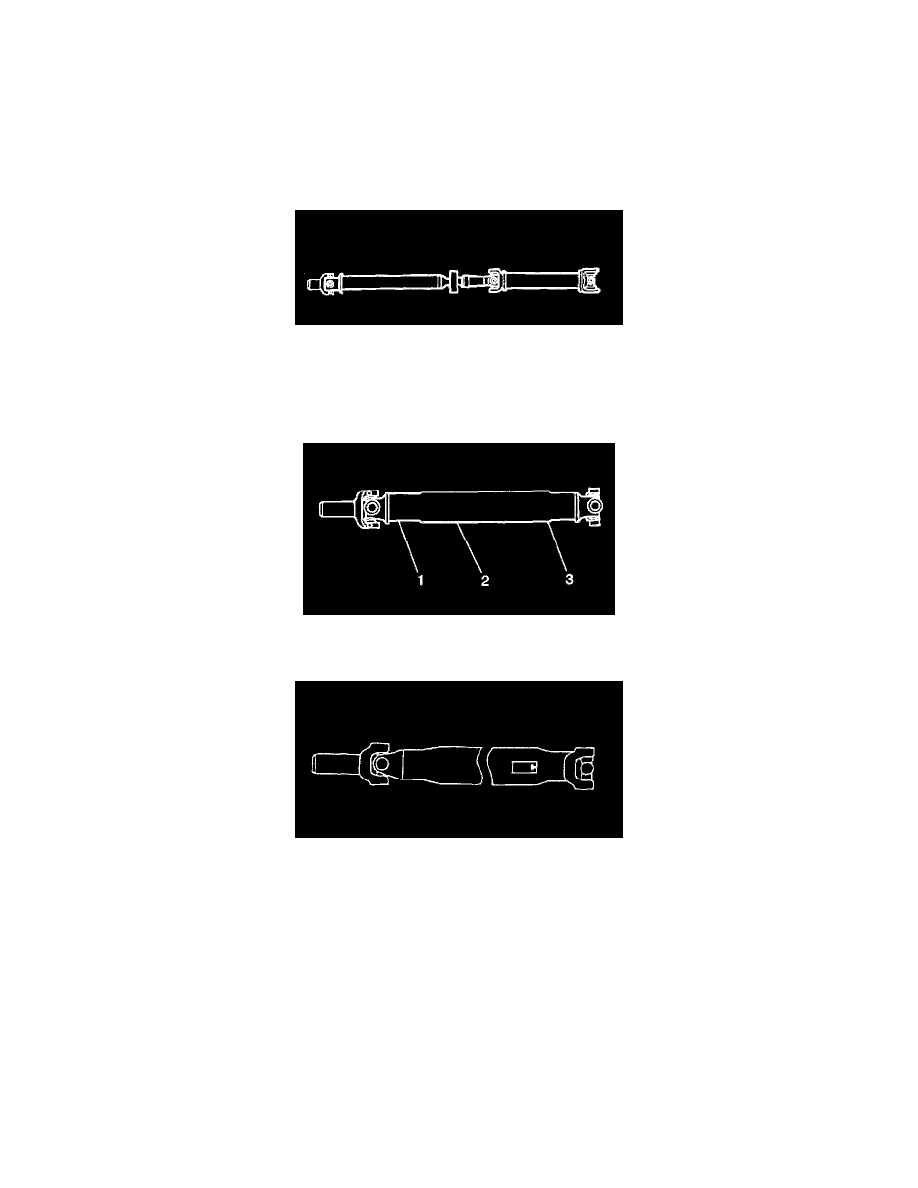Express 1/2 Ton Van V6-4.3L VIN W (1999)

Drive/Propeller Shaft: Description and Operation
Torque is transmitted from the transmission to the axle through a propeller shaft and the universal joint. The propeller shafts vary with the vehicle's
wheel base, transmission and rear axle combination. Propeller shafts have universal joints at each end in order to accommodate angle variations of
position between the transmission and rear axle caused by suspension motion. The driveline connects to the transmission with a splined slip joint and to
the axle with either a strapped flange or a piloted flange.
The driveline components in this vehicle are balanced. Balancing provides a smoother running driveline operation. These components include the
propeller shaft, rear axle, engine and transmission. All components must be reassembled in the exact relationship to each other as they were when
removed.
Phasing
The propeller shaft has yoke lugs (ears) in line with each other. The design with yoke lugs in line with each other is called phasing.
A phasing design reduces the vibration in the driveline. Vibration in the driveline results from the way the universal joints move in order to
accommodate the angle between the engine and the rear axle.
The smoothest driveline results when the propeller shaft (2) is in phase. Small fluctuations in torque due to the changing angles occur at each universal
joint as the propeller shaft rotates.
The propeller shaft is in phase when the two ends of the propeller shaft experience the same torque fluctuations. As the torque increases at one end it also
increases at the other. The periodic torque increase produces smooth rotational velocity fluctuations and minimizes the jerk which would occur with
opposing torque changes at each end.
A one-piece propeller shaft will always be in phase unless it was built incorrectly. If the one-piece is incorrectly built, you must replace the propeller
shaft.
Do not reweld the propeller shaft under any circumstances. A two-piece propeller shaft goes out of phase if taken apart at the center slip yoke and
reassembled incorrectly. If the two-piece propeller shaft has been taken apart it can be put back in phase; however you must take caution. There are two
ways that you can put the propeller shaft back into phase but only one way that it will be in balance. Refer to Correcting Driveline Vibration RWD and
4WD in Vibration Diagnosis and Correction under Steering and Suspension Testing and Inspection. As with the one-piece propeller shaft, under no
circumstance should you reweld the two-piece propeller shaft.
Balancing
You must reference mark the propeller shaft and rear axle before removal or separation in order to ensure that upon reinstallation, the propeller shaft is in
phase, balanced, and aligned with the axle correctly.
